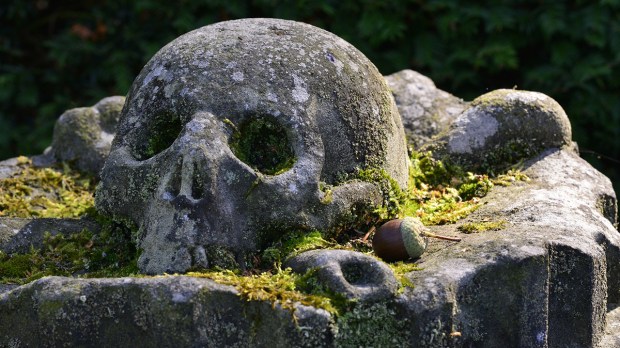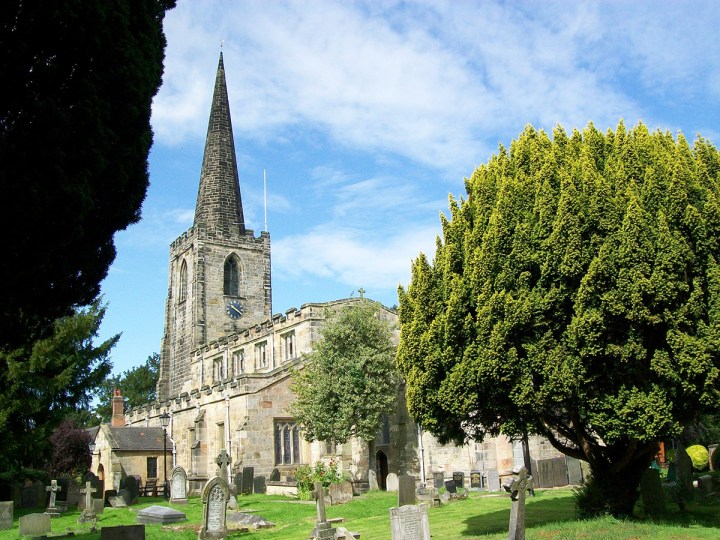Explore a cemetery or churchyard throughout the United Kingdom, France, Spain, or Ireland, and you’re likely to find a “tree of death.” Native to Britain, the yew — Taxus baccata — is wrapped in a tangle of delightfully spooky symbolism perfect for the Catholic tradition of memento mori.
The European yew tree is a slow-growing and extraordinarily long-lived species. The largest still-living yews are thought to have been planted by Celts during the pre-Christian era. An older yew will often hollow out in the center, and in some instances will send down an internal shoot within the cavity, which then takes root — a tree within a tree.
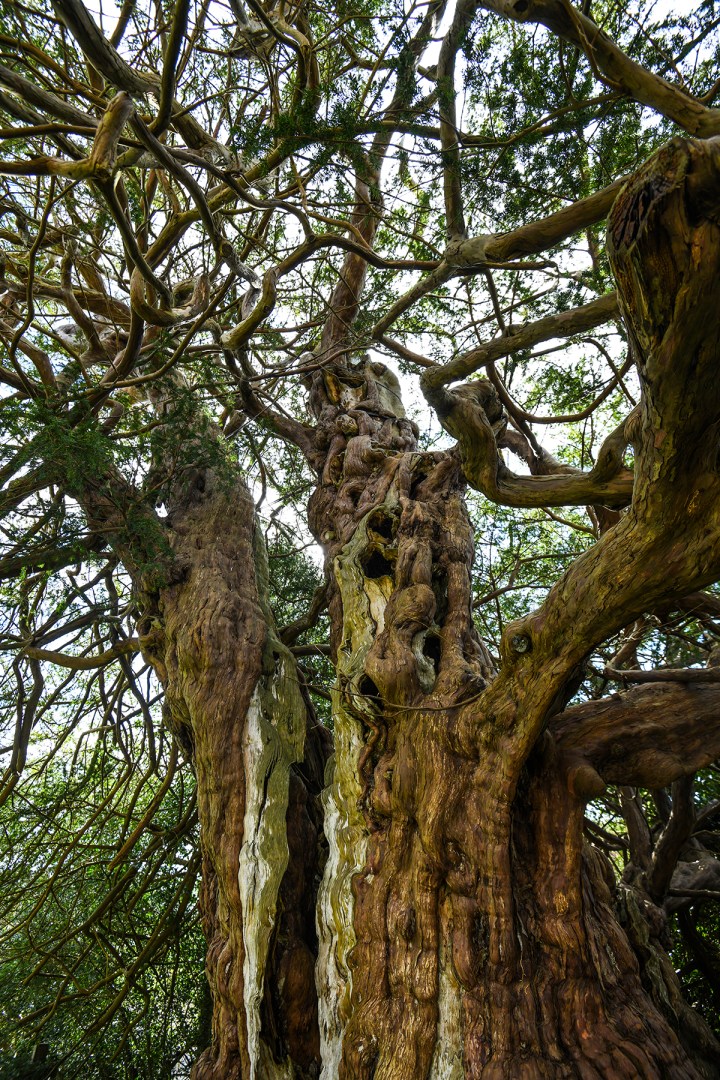
This nature of restorative new growth fit well with the druidic belief in reincarnation. The druids and their followers worshiped the sacred yew and often buried their dead under its limbs.
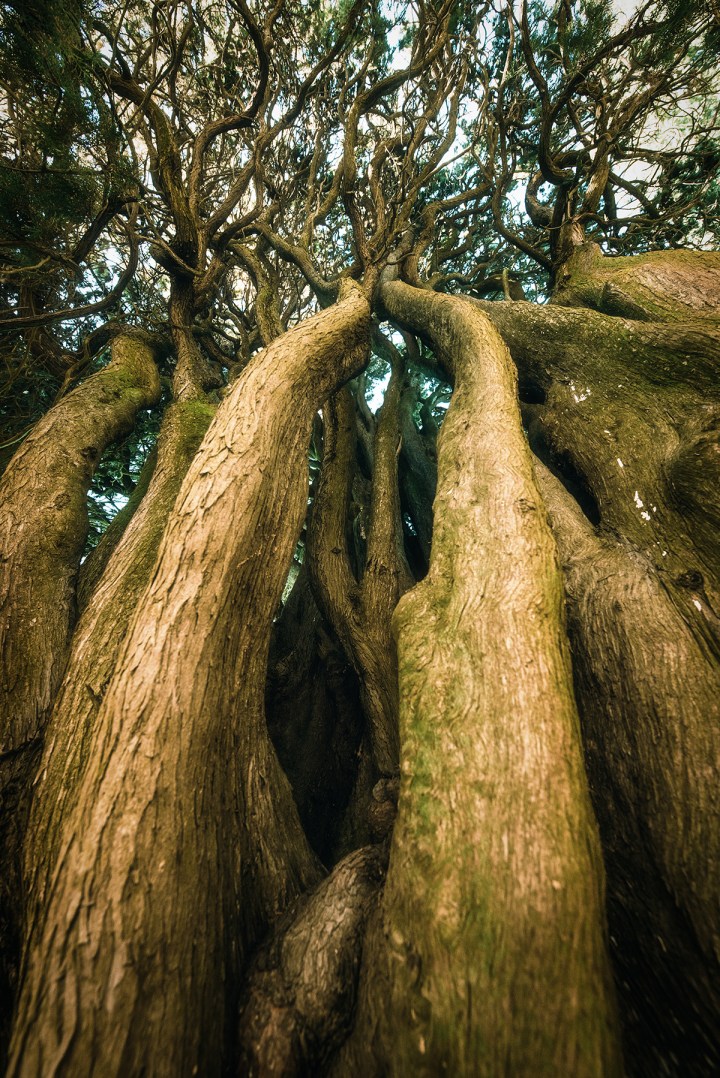
When Christians arrived and moved through the country, settling and converting, they built their churches on the old druidic sacred sites and buried their dead within the same graveyards. Again because of its ability to regenerate, the yew tree came to symbolize resurrection in the Christian era. In anticipation of this final event, the dead were buried with their head to the west and feet to the east which allowed for the dead to face the Lord when the day of resurrection occurred. The yew’s regeneration gave rise to the concept of new life on a spiritual level as well, and as Christians we know this can occur no matter how old the person.
What is believed to be the oldest living yew, the Fortingall Yew, is in a church yard in Scotland. Folklore tells that Pontius Pilate’s mother, while traveling, gave birth to the future governor of Judea under this tree and that he played in its limbs as a child.
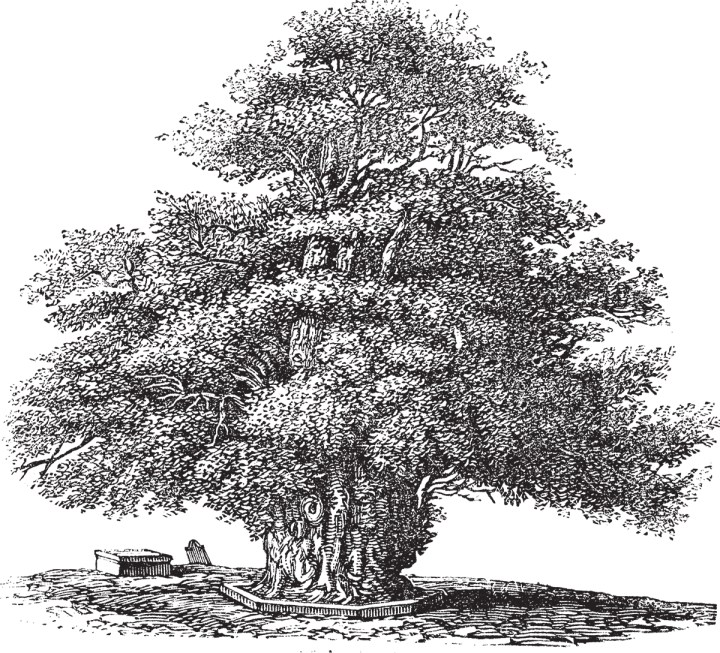
Legend, or folklore, held that yews grew especially well in ground enriched by rotting bodies. It was also thought that the trees drew up the putrefactions from the corpses, keeping the soil and groundwater safe, and decreasing the stench. Some believed the tree kept loved ones near, since they were bound within the tree even though their souls lived elsewhere. Folklore has it that the roots of the yew grew through the eye sockets of the deceased to secure the bodies in the earth, preventing the corpse from escaping the grave.

The yew’s needles bear another association to death. They, like the sap, are poisonous, and used for assassination and suicide — and were believed to be all the more potent if taken from graveyards, where the tree sucked up the blood of the dead.
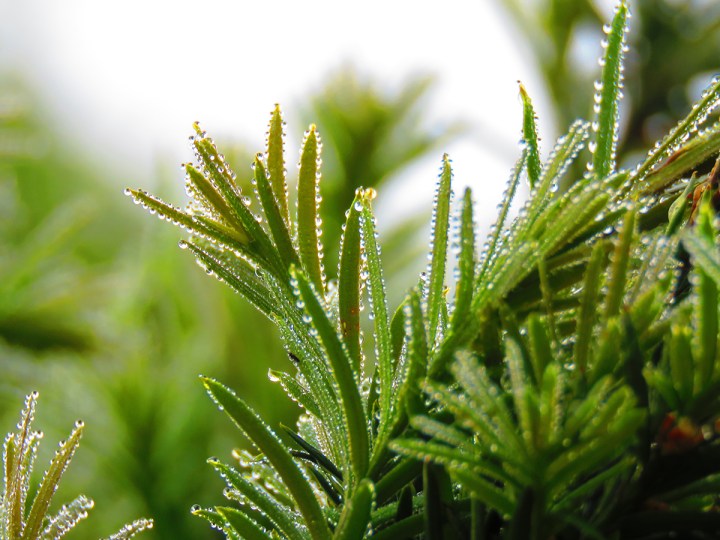
Yew berries add to the ghoulish aspects of the tree of death. The berries are ripe in mid-winter, when everything else is dead. Though the flesh is sweet, the seed, called a pip, is as poisonous as the needles. These poison berries look like glowing red eyes. In Christianity, the red berries can be associated with the blood of Christ; the poisonous seed representing death to self, and the red fruit new life in him.
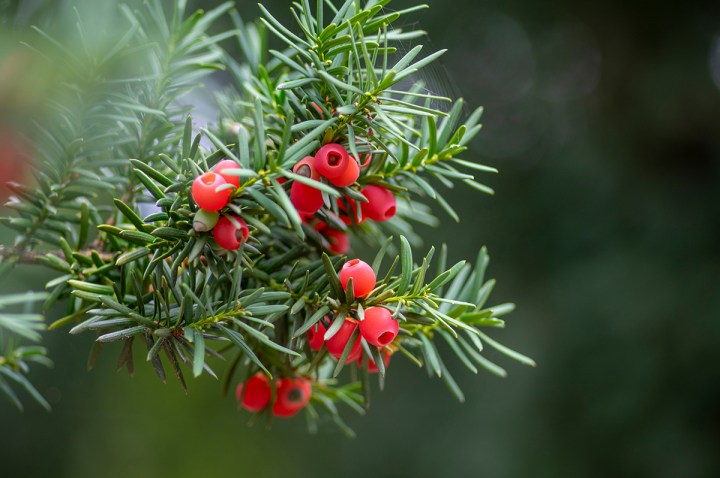
The yew’s gnarled, contorted trunk looks like twisted flesh, and some folks see the outline of faces, legs and arms trapped in the outlines of the red-brown bark. Imagine walking through the cemetery on a breezy night, while shadows cause the bark to appear as moving limbs and skulls. And, just for an added shiver up your spine, the yew tree bleeds blood-red sap when pierced or cut!
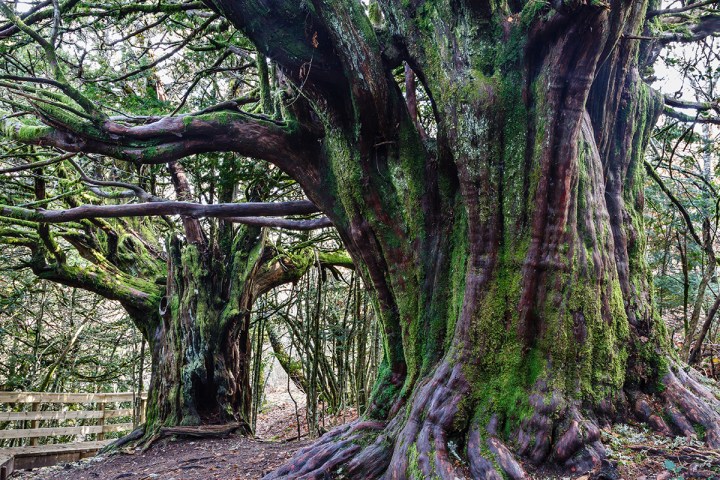
The long-grained wood of the yew was a perfect wood to make bows, the weapon of choice for both hunting and warfare throughout Europe. As Edmund Spencer wrote in The Faerie Queene, “The Eugh obedient to the bender’s will” — and often that was to bring death, whether to animal or human.

Oh, and one last item of folklore… never bring yew branches into a house, for death will surely follow.
Not all of the yew’s associations are completely ghoulish. In recent years, for example, the yew’s poison has been turned against death, in the form of the drug Taxol, a naturally sourced anti-cancer agent. All in all, the Tree of Death bears deep spiritual reminders for the Christian: being evergreen, it is symbolic of eternal life; its wood is resistant to decay, as we also will be after the resurrection; and its red sap and berries reminds us the blood of Christ.
So when you see a yew, remember your death — memento mori!
